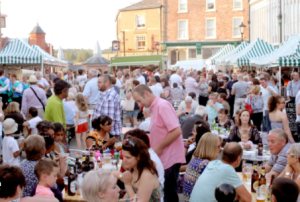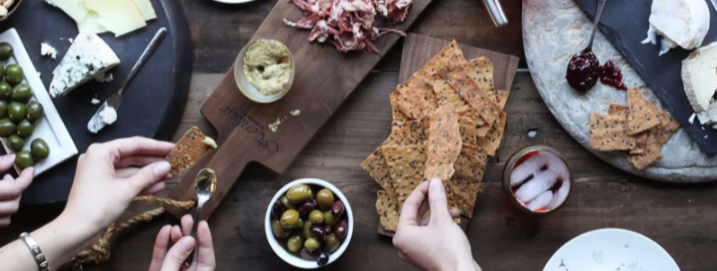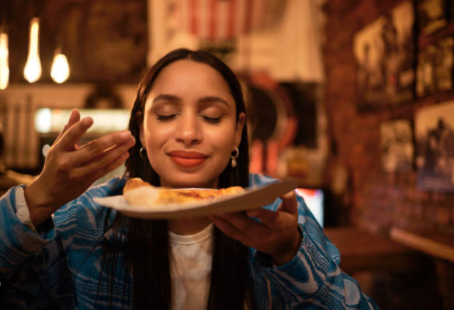 The term “foodie” may be a modern invention, but the passion for gourmet eating, culinary exploration, and food appreciation dates back thousands of years. What we now recognize as the foodie lifestyle—an obsession with high-quality ingredients, exotic flavors, and dining experiences—has evolved through centuries of cultural, economic, and technological changes.
The term “foodie” may be a modern invention, but the passion for gourmet eating, culinary exploration, and food appreciation dates back thousands of years. What we now recognize as the foodie lifestyle—an obsession with high-quality ingredients, exotic flavors, and dining experiences—has evolved through centuries of cultural, economic, and technological changes.
In this article, we’ll trace the fascinating history of foodie culture, from ancient royal banquets to today’s social media-driven gastronomy trends. We’ll explore how food appreciation became a global phenomenon and how the definition of a “foodie” has transformed over time.
Ancient Roots: Feasting as a Status Symbol
1. Royalty & the First Food Connoisseurs
Long before food blogs and Michelin stars, ancient civilizations celebrated food as a form of luxury and power.
-
Egyptian Pharaohs (3000 BCE) hosted lavish feasts with exotic meats, honeyed fruits, and fine wines.
-
Roman Empire (27 BCE – 476 CE) took indulgence to new heights with multi-course “gustatio” banquets featuring flamingo tongues, dormice, and garum (fermented fish sauce).
-
Chinese Emperors (Tang Dynasty, 618-907 CE) employed royal chefs to create elaborate dishes, valuing balance in flavor (sweet, sour, bitter, spicy, salty).
These early “foodies” weren’t just eating for survival—they were curating experiences to showcase wealth and sophistication.
2. Medieval Europe: Spices as Currency
During the Middle Ages, food became a marker of social class.
-
The wealthy dined on spiced meats, sugared almonds, and imported delicacies like saffron and pepper.
-
The poor subsisted on bread, porridge, and root vegetables.
The Silk Road (trade routes between Europe and Asia) introduced new flavors, making spices like cinnamon, nutmeg, and cloves highly coveted—worth their weight in gold.
The Birth of Modern Gastronomy (18th-19th Century)
1. French Haute Cuisine & the Rise of Restaurants
The French Revolution (1789-1799) played a surprising role in foodie culture. After the monarchy fell, unemployed royal chefs opened the first public restaurants, turning fine dining into an art form.
-
Marie-Antoine Carême (1784-1833), the “King of Chefs,” pioneered haute cuisine, emphasizing presentation and elaborate sauces.
-
Auguste Escoffier (1846-1935) later modernized French cooking, creating the brigade system still used in professional kitchens today.
2. The Gilded Age & American Gourmet Culture
In the late 19th century, America’s elite embraced European-style dining.
-
Delmonico’s (est. 1837), New York’s first fine-dining restaurant, introduced dishes like Baked Alaska and Lobster Newburg.
-
Railroad tycoons and industrialists hosted extravagant dinner parties with imported wines and multi-course meals.
Meanwhile, food critics emerged, with guides like Michelin (1900) and Gault & Millau (1960s) shaping culinary standards.
20th Century: The Democratization of Foodie Culture
1. Post-War Prosperity & Global Flavors
After World War II, economic growth and globalization made exotic foods more accessible.
-
Julia Child (1960s) brought French cuisine to American homes via TV, inspiring home cooks to experiment.
-
Ethnic restaurants (Italian, Chinese, Mexican) flourished, expanding palates beyond traditional Western fare.
2. The Rise of Food Media
-
Magazines (Gourmet, Bon Appétit) glamorized cooking and dining.
-
TV Food Shows (1990s-2000s)—like Iron Chef and Anthony Bourdain: No Reservations—turned chefs into celebrities.
-
Food Blogs & Early Internet (2000s) allowed amateur foodies to share recipes and reviews.
3. The Organic & Slow Food Movement (1980s-Present)
As fast food dominated, a counter-movement emerged:
-
Alice Waters (Chez Panisse) championed farm-to-table dining.
-
Carlo Petrini (Slow Food, 1986) advocated for traditional, sustainable eating.
This shift made foodies more conscious of sourcing, ethics, and authenticity.
The Digital Age: Instagram, Food Tourism & the Modern Foodie
1. Social Media’s Influence (2010s-Present)
Platforms like Instagram, TikTok, and YouTube revolutionized foodie culture:
-
“Instagrammable” dishes (rainbow bagels, freakshakes) prioritized aesthetics over taste.
-
Food influencers gained massive followings by reviewing restaurants or sharing recipes.
-
Delivery apps (Uber Eats, DoorDash) made gourmet meals accessible at home.
2. Food Tourism & Experiential Dining
Modern foodies don’t just eat—they seek immersive experiences:
-
Pop-up dinners and secret supper clubs.
-
Food festivals (Taste of Chicago, Madrid Fusión).
-
Travel centered around cuisine (e.g., sushi in Tokyo, pasta in Rome).
3. The Rise of “Foodie” as Identity
Today, being a foodie isn’t just a hobby—it’s a lifestyle:
-
Home chefs experiment with sous vide, fermentation, and molecular gastronomy.
-
Food documentaries (Chef’s Table, Salt Fat Acid Heat) deepen culinary appreciation.
-
Sustainability and dietary trends (veganism, keto, zero-waste cooking) shape modern foodie values.
The Ever-Evolving Foodie
From ancient feasts to TikTok trends, the foodie lifestyle has always reflected society’s values—luxury, innovation, globalization, and now, digital connectivity. What began as a privilege of kings has become a democratic passion, accessible to anyone with curiosity and an appetite for discovery.
As food culture continues evolving, one thing remains constant: the joy of sharing a great meal. Whether you’re a home cook, a restaurant hopper, or an armchair traveler exploring global cuisines, being a foodie means celebrating the stories, people, and flavors that make eating an art.

